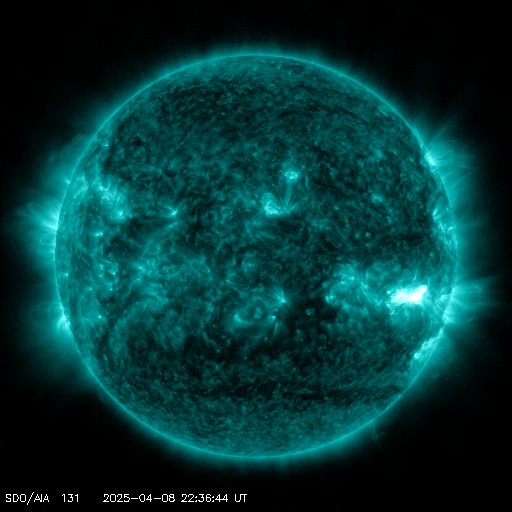Viewing archive of Monday, 28 April 2003
Solar activity report
Prepared by the NOAA © SWPC and processed by SpaceWeatherLive.com
Joint USAF/NOAA Report of Solar and Geophysical Activity
SDF Number 118 Issued at 2200Z on 28 Apr 2003IA. Analysis of Solar Active Regions and Activity from 27-2100Z to 28-2100Z
IB. Solar Activity Forecast
IIA. Geophysical Activity Summary 27-2100Z to 28-2100Z
IIB. Geophysical Activity Forecast
III. Event Probabilities 29 Apr to 01 May
| Class M | 40% | 35% | 35% |
| Class X | 05% | 01% | 01% |
| Proton | 01% | 01% | 01% |
| PCAF | green | ||
IV. Penticton 10.7 cm Flux
Observed 28 Apr 152 Predicted 29 Apr-01 May 150/150/145 90 Day Mean 28 Apr 127
V. Geomagnetic A Indices
Observed Afr/Ap 27 Apr 011/015 Estimated Afr/Ap 28 Apr 012/020 Predicted Afr/Ap 29 Apr-01 May 012/015-012/015-015/020
VI. Geomagnetic Activity Probabilities 29 Apr to 01 May
| A. Middle Latitudes | |||
|---|---|---|---|
| Active | 25% | 25% | 35% |
| Minor storm | 10% | 10% | 20% |
| Major-severe storm | 05% | 05% | 10% |
| B. High Latitudes | |||
|---|---|---|---|
| Active | 35% | 35% | 45% |
| Minor storm | 20% | 20% | 30% |
| Major-severe storm | 10% | 10% | 15% |
All times in UTC
Current data suggests there is a moderate possibility for aurora to appear at the following high latitude regions in the near future
Gillam, MB, Whitehorse, YT, Yellowknife, NTFairbanks, AK
Current data suggests there is a slight possibility for aurora to appear at the following high latitude regions in the near future
Edmonton, AB, Saskatoon, SKAnchorage, AK, Juneau, AK
Current data suggests there is a slight possibility for aurora to appear at the following middle latitude regions in the near future
Calgary, ABLatest news
Latest forum messages
Support SpaceWeatherLive.com!
A lot of people come to SpaceWeatherLive to follow the Sun's activity or if there is aurora to be seen, but with more traffic comes higher server costs. Consider a donation if you enjoy SpaceWeatherLive so we can keep the website online!

Latest alerts
02:00 UTC - Geomagnetic activity
Minor G1 geomagnetic storm (Kp5) Threshold Reached: 01:45 UTC
Tuesday, 8 April 2025
23:57 UTC - Hemispheric Power Index
The OVATION model predicts the Hemispheric Power Index to reach 50GW at 00:44 UTC
22:42 UTC - Solar flare
Moderate M1.57 flare
22:24 UTC - Radio Blackout
Minor R1 radio blackout in progress (≥M1 - current: M1.52)
15:15 UTC - Geomagnetic activity
Minor G1 geomagnetic storm (Kp5) Threshold Reached: 14:59 UTC
Space weather facts
| Last X-flare | 2025/03/28 | X1.1 |
| Last M-flare | 2025/04/08 | M1.5 |
| Last geomagnetic storm | 2025/04/06 | Kp5 (G1) |
| Spotless days | |
|---|---|
| Last spotless day | 2022/06/08 |
| Monthly mean Sunspot Number | |
|---|---|
| March 2025 | 134.2 -20.4 |
| April 2025 | 148.6 +14.4 |
| Last 30 days | 137.1 -0.2 |





